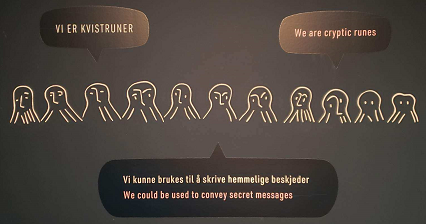Last Updated on July 2, 2022
The Vikings
In this account of my travels to Norway and the British Isles, it would be unforgivably remiss to omit a little chat about the Vikings. Even if the account were about Russia or Constantinople, Iran, Arabia or Spain, Sicily and the Mediterranean, or Iceland and Greenland, it would be remiss to omit a little chat about the Vikings because the Vikings went everywhere! An on-board lecture on our cruise ship was very helpful in understanding the Vikings.
The Vikings were Norsemen (Northmen) from Scandinavia (modern-day Denmark, Sweden, and Norway). Before they started traveling by ship (“going Viking”), they were mostly farmers, fishermen, craftsmen, and traders. They lived in rural villages, and their society was organized with chieftains and clan heads at the top. At some point, their population outgrew their food supply, and so they took off, exploring. They were master ship-builders. Their “longship,” a large, fast-moving boat with one sail, could carry 30 rowing sailors. It could move at 15 Knots and was very maneuverable with identical fore and aft design and a shallow draft. The identical fore and aft design allowed for hasty retreat or escape from a foe if the odds of winning a skirmish did not look promising.
The Vikings did seek trading opportunities, but they also engaged in raiding coastal towns near and far, pillaging and plundering unsuspecting communities. Their style was hit-and-run, shock-and-awe. They did not hesitate to kill and burn. Their “first shock” was in the year 793 when they attacked a monastery, an event that pretty much established their reputation as savage warriors. Over time, they remained in many foreign places, becoming settlers and citizens, assimilating the local culture and marrying local women.
Over the centuries, the Vikings were converted from paganism to Christianity, but the transition was gradual; sometimes both Thor and God were worshipped together. The Vikings were clean, well-groomed, sophisticated people who bathed regularly – not necessarily a common practice among other groups in those days. (English women found Viking men attractive.) At home, Norsewomen had typical domestic responsibilities like cooking and spinning and weaving, and they sometimes became prominent members of society when their men were gone for long periods. Fish, sheep, goat, and reindeer were favorites in the Viking diet.
The Vikings carved objects out of wood, stone, and bone. They also carved their own teeth, making artsy horizontal grooves in them; or they filed their teeth into points and painted them red to look more scary! They used silk from East Asia in their textiles; made jewelry; and worked in iron, gold, silver, and bronze.


Their written letters, called “runes,” were imitations of Latin letters that were used throughout Europe at the time. Runes were a literal alphabet but also symbols holding power and magical qualities. (Our familiar Bluetooth symbol is actually two runes combined!) Viking sagas were oral stories and poems about kings and heroes, beautiful women, dangerous journeys, battles, dragons, etc. Over the centuries, the Vikings eventually established a centralized government.
The Viking Age ended in 1066 in England with the Battle of Hastings.
Those Vikings were some hearty, daring, courageous, ingenious, adventurous, albeit kind of brutal people. I’ve become a Vikings fan! (After the Ravens, of course.)
One thing to remember about the Vikings: They did not put horns on their helmets. Only robust, substantially-built mezzo-soprano opera stars wear helmets with horns. These headdresses first appeared in Wagner’s opera The Ring Cycle in 1876.
Julie Helms
